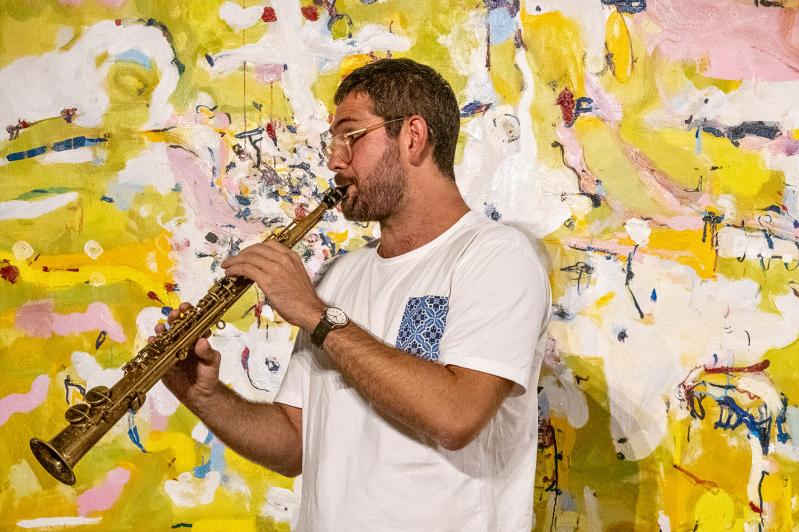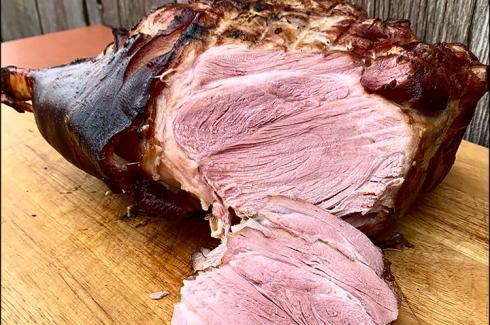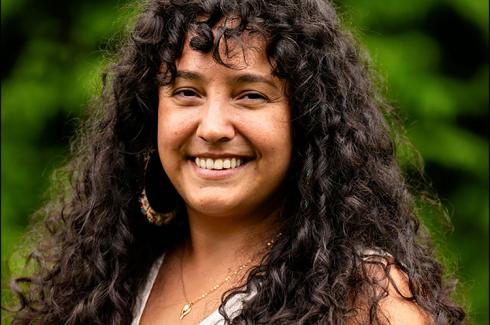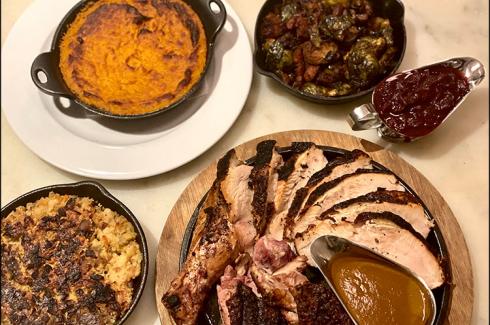Much has been written about the connection between music and philosophy. They go hand in hand, Rob J. Kennedy, the composer and journalist, wrote. "Both speak about the fundamentals of life, though they use a different language. However, music is more open-ended at explaining or sounding out human experiences and showing our emotions."
These ideas, in turn, go hand in hand with Tomas Majcherski, an East Hampton native who will lead a jazz quartet at the Sagaponack Farm Distillery on Friday from 4 to 7 p.m. A conversation with Mr. Majcherski last week included a dizzying sprint across the history of "improvised American classical music," as Billy Hart, a drummer, called jazz in these pages last year, with references to musicians, styles, places, and traditions interspersed with metaphysical thoughts and observations.
The multi-instrumentalist plays tenor, alto, and soprano saxophone, clarinet, piano, guitar, and flute, and has both gone where music and the muse have taken him and incorporated those experiences in what he calls "the most consequential artistic development in this nation's history."
At 5, he began learning piano from his father, who as a child had been trained as a concert pianist in Poland and later in Uruguay. He also studied with a teacher in Sag Harbor. At the John M. Marshall Elementary School in East Hampton, he was handed a saxophone by Marilyn Van Scoyoc, who conducted the fourth-grade band. "I am forever grateful to her," he said. The sax "fit my personality."
At the East Hampton Middle School, Michael Kendrot, the music teacher, "would allow us to hang in the band room during lunch. We'd spend our time playing music and messing around on the drums, our saxes." In seventh grade, he taught himself guitar. At East Hampton High School, he played in the concert and jazz bands. After two years, he transferred to the Ross School, where he studied with Hal McCusick, who also taught John Ludlow, a saxophonist and South Fork native. The young musicians were exposed to legends like Lester Young, Charlie Parker, Freddie Hubbard, Wayne Shorter, and John Coltrane.
While at Ross, he visited Ghana, a trip arranged by Kenneth Sax, a philosophy teacher who also played percussion. "There, I got to hear and see and meet some amazing drummers, musicians from the traditional school. We were playing a rhythm called kpanlogo, a Ghanaian rhythm modernized with Cuban influences." He met Okoe Ardeyfio, a drummer and dancer "who "became pretty instrumental to my life." He played gigs with Mr. Ardeyfio, who died in 2021, in the band Okoemotion, and later returned to Ghana to record with Mr. Ardeyfio's ensemble.
During his time at Ross, "I also met my friend Max Feldschuh," a pianist and vibraphonist who lives in Hampton Bays. "I am in awe of him and grateful to be a friend. He's also an amazing, deep, and compassionate human being." Through Mr. Feldschuh, he met Teddy Charles, a vibraphonist who had played with Miles Davis and Charles Mingus and lived in Riverhead until his death in 2012. "I would go to jam sessions at his house," where Mr. Feldschuh studied vibraphone.
At the same time, Claes Brondal started the Jam Session, a nonprofit arts and education organization that uses performances of jazz, Latin, and world music as a means to bring the diverse population of the area together. It "was a great place to develop my playing," Mr. Majcherski said. He played with him on Tuesday at the weekly jazz night Mr. Brondal hosts at the Masonic Temple in Sag Harbor.
Another influence is the abstract art of his mother, Priscilla Heine. Moki Cherry, one of his mother's friends and a Swedish artist and designer, would tell him about musicians like Thelonious Monk and Ornette Coleman, who she knew through her husband, Don Cherry, a trumpeter who died in 1995. Ms. Cherry died in 2009.
"Also, my mom had this connection with a piece of land" in Vermont, "near the Bread and Puppet Theater. They were known for political puppet theater in the '60s and '70s, and then moved to Vermont." The theater had a brass band that "was plugged into New Orleans music," which would play a larger role in his education later.
He put music aside while studying philosophy at Columbia University, but decided that "it wasn't really the thing I wanted to spend the next years of my life doing." After college and with nothing else to do, he house-sat for a couple in Cleveland. "It proved to be a really important move for me, because it caused me to be a musician again." He worked various jobs there, including playing in a rhythm-and-blues band.
"I started playing bars and block parties, and was just like, this is such a better job! I could see that as a type of life, the gift of music. . . . I got to participate in that, people were enjoying and appreciating it, and on top of that I got to see that musicians get to intersect with people from all different walks of life."
One day he might be at a social function playing to Bellini-sipping suits, the next a block party in a lower-income neighborhood, the next a church function. "Having studied philosophy and being prone to universal sentiments, I was drawn to this aspect of the job. I felt I was getting to participate in something people could feel."
He moved to New Orleans and spent some years playing with groups on the street. "I started studying New Orleans music from the '20s and '30s, and got deeper into the New Orleans traditional jazz revival." He enrolled in a master's degree program at the University of New Orleans, studying with Ed Petersen. "He put me onto a higher level of how to deal with the horn, which I probably needed but wasn't at the level when I was younger to receive it."
He went to Uruguay and played with a group there and in Paraguay -- "amazing, eye-opening experiences through the oneness of the story of the Americas" -- and then "realized that my home, musically and geographically, was in the Northeast."
After waiting out the Covid-19 pandemic with his parents in Vermont, he moved to Queens, where he is now based. Recent projects include Tranqwild, a group he co-leads with Federico De Vittor, an Italian pianist. Most of their album "Walking, Remembering" comprises Mr. Majcherski's compositions. Two albums recorded with groups in Uruguay are nearing completion, and he expects to complete an album of his own music with a trio in New Orleans this month. "All of that will come out in this next year," he said.
At tomorrow's performance in Sagaponack, the Tomas Majcherski Quartet will feature Mr. Feldschuh on vibraphone, Dominic Duval Jr. on bass, and Mark Johnson on drums. There is no cover.
"Life is a compendium of experiences we keep running through, gearing up for the next challenge," he said. "I'm thankful for the fact that I get to play music. It's an honor. I thank the universe that I continue to do so."




